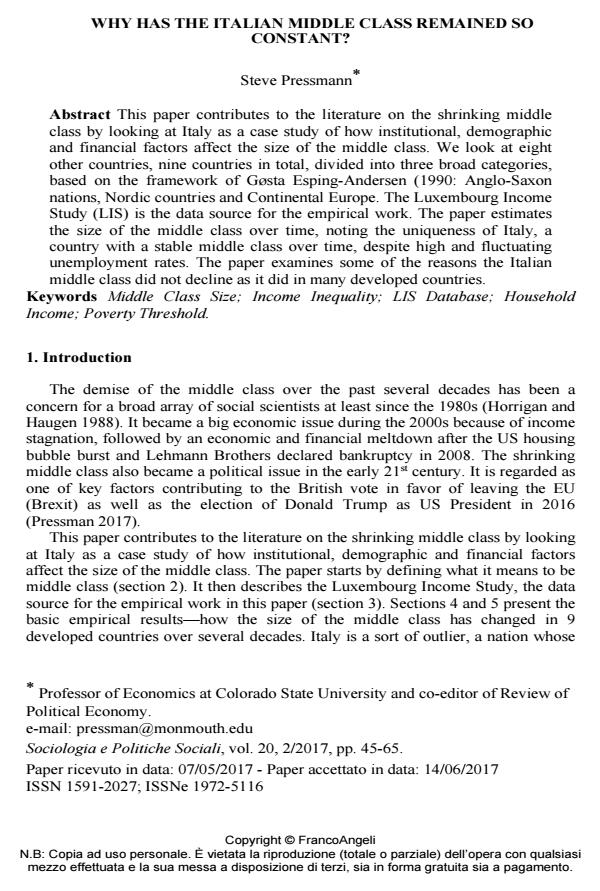Why has the italian middle class remained so constant?
Journal title SOCIOLOGIA E POLITICHE SOCIALI
Author/s Steve Pressmann
Publishing Year 2017 Issue 2017/2
Language English Pages 21 P. 45-65 File size 327 KB
DOI 10.3280/SP2017-002004
DOI is like a bar code for intellectual property: to have more infomation
click here
Below, you can see the article first page
If you want to buy this article in PDF format, you can do it, following the instructions to buy download credits

FrancoAngeli is member of Publishers International Linking Association, Inc (PILA), a not-for-profit association which run the CrossRef service enabling links to and from online scholarly content.
This paper contributes to the literature on the shrinking middle class by looking at Italy as a case study of how institutional, demographic and financial factors affect the size of the middle class. We look at eight other countries, nine countries in total, divided into three broad categories, based on the framework of Gøsta Esping-Andersen (1990: Anglo-Saxon nations, Nordic countries and Continental Europe. The Luxembourg Income Study (LIS) is the data source for the empirical work. The paper estimates the size of the middle class over time, noting the uniqueness of Italy, a country with a stable middle class over time, despite high and fluctuating unemployment rates. The paper examines some of the reasons the Italian middle class did not decline as it did in many developed countries.
Keywords: Middle Class Size; Income Inequality; LIS Database; Household Income; Poverty Threshold.
- Narrowing the gap: the middle class and the modernization of welfare in Italy Remo Siza, in International Journal of Sociology and Social Policy /2018 pp.116
DOI: 10.1108/IJSSP-02-2017-0011 - Declines and divisions: the missing welfare needs of the majority Remo Siza, in Journal of International and Comparative Social Policy /2019 pp.211
DOI: 10.1080/21699763.2018.1559755
Steve Pressmann, Why has the italian middle class remained so constant? in "SOCIOLOGIA E POLITICHE SOCIALI" 2/2017, pp 45-65, DOI: 10.3280/SP2017-002004